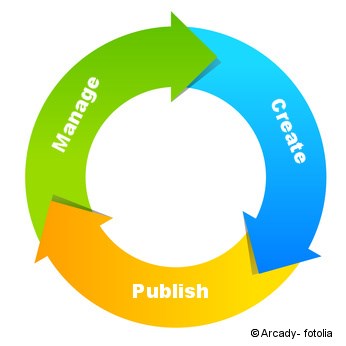Content Management is the processes and technologies by which an organisation creates, publishes, and manages its digital content. Digital content can take the form of text, images, audio and video as well as web content such as webpages.
The goals of an organisation will inform its content management strategy. The content management process will facilitate the execution of that strategy. In general, content management helps organisations to effectively use their content to help the organisation achieve its goals. This is often achieved by using a Content Management System (CMS).
The stages of creating, publishing and managing digital content are often called the content management lifecycle.
Here are some examples of the kind of activities that can happen at each stage:

Do you need support with the preparation of SEO texts? Please consult us for more information about our solutions!
A common technology used to carry out content management is a Content Management System or CMS. Content management systems create a central location where the content is stored to make it easier for people to collaborate. Content management systems usually keep track of changes to a piece of content, a process called version control, which helps people working together to be more efficient. Using a CMS can be more cost efficient because handling the content management in one location can save money on security, backup and translation.
Most CMS platforms feature the ability to publish content such as webpages or images to websites. These are known as Web Content Management Systems (WCMS) and examples of these systems include WordPress, Drupal & Joomla!. For large organisations, there are enterprise-level CMS platforms which include web publishing as part of their solutions. For example, Microsoft offers web publishing through their Software as a Service (SaaS) product Microsoft Office 365.